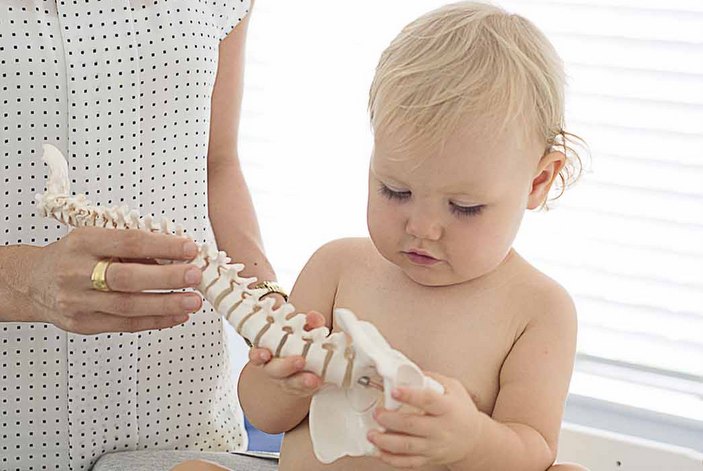International Peer-reviewed Chiropractic Pediatric History and Examination Forms for the Infant, Child, and Adolescent
SOURCE: J Clinical Chiropractic Pediatrics 2023 (Jun); 22 (1): 1958
| OPEN ACCESS |
Sue A. Weber BSc, DC, MScAPP
Chairperson/faculty European Academy Chiropractic
special interest group in pediatrics (FEAC)
Faculty Royal College of Chiropractors Pediatrics (FRCC)
Practitioner, Stockholm Sweden

The assessment of the pediatric patient is a specialized area of chiropractic practice, requiring additional knowledge and skills. In recognition of this, European Academy of Chiropractors’ special interest group for pediatrics together with an international group of pediatric musculoskeletal experts have expanded on the previously published basic history and examination forms for infants, children and adolescents. The aim of these forms is to further assist the chiropractor in identifying red flags and differentially diagnosing problems in musculoskeletal and mental health as they present throughout growth and development. The process of development of the forms is outlined, and the three forms are presented in this article.
Keywords: chiropractic pediatric, pediatric history form, pediatric examination form, pediatric red flags, pediatric musculoskeletal health.
From the Full-Text Article:
There are more articles like this @
Introduction
Chiropractic education typically includes a cursory level of education within pediatrics, [1] which varies from institution to institution. Practitioners interested in pediatrics can pursue additional education through continuing professional development courses, a diplomate, a Master’s degree or a PhD through a range of providers. Surveys show that the majority of practitioners see children of all ages but feel they have inadequate skills in assessment and treatment. [1]
Triaging musculoskeletal and non-musculoskeletal complaints is of the highest priority for the chiropractor. [2] This is a vital skill and knowledge base for those seeing the pediatric patients to develop, as differential diagnosis and treatment are significantly different than in the adult patient. [3] Children, and particularly infants, are not miniature adults. There are specific and different concerns for each age group which must be addressed with an appropriate history and examination. Basic forms for the infant, child and adolescent have been published to establish a minimum competency for chiropractors who lack advanced education in this area. [4] These forms address skills specifically in musculoskeletal differential diagnosis as well as recognizing for referral the ill child ensuring safe care of this population. Additional exam forms addressing specific pediatric complaints commonly presenting to chiropractors were initiated and intended to complement the basic forms. As these were being drawn up there seemed to be unnecessary repetition so this idea was abandoned. More comprehensive history and exam forms were deemed more appropriate and are presented in this article. They address more age-specific issues in musculoskeletal health, sensory issues, and psychosocial health. For the purposes of safety, the forms include a review of systems, a neurological examination, and red flags. The infant forms include, besides history, a review of the mothers’ health and the perinatal period.
AIMS
The European Academy of Chiropractic (EAC) is working to provide cost-free postgraduate education for practitioners. One of the EAC special interest groups (SIG) is pediatrics, where members are working to advance education specific to pediatric practice. The SIG team in pediatrics published in 2021 basic history and exam forms for the infant, child and adolescent. [4] The work since publication of these forms has been to draw up regional forms covering specific conditions within pediatric musculoskeletal health. Due to unnecessary repetition, we decided to enhance and expand the original forms to include these areas along with mental health and wellbeing in the different age groups.
 See p. 2 |
Psychosocial health was deemed important as is has become such burden for some children with an increased risk for suicide in adolescents. Pediatric headache history, exam and questionnaire have been recently published separately, [5] so this will be referenced for use in the comprehensive form. An outcome assessment for suboptimal breastfeeding with a musculoskeletal origin has been published recently [6] and is referred to in these forms. Malignancies in children, though rare are different than those presenting in adults. [7] Clinicians should remain abreast of current prevalence statistics and include in the differential diagnosis when appropriate. They are listed in Table 1.
The SIG team engaged the participation of several other chiropractors, most with advanced academic education within pediatrics (Masters or PhD) to review these forms. We intentionally invited practitioners from several different countries to participate to make this an international peer-reviewed pediatric project. A long-term goal is to have these forms implemented internationally to be able to collect data for use in future research projects. The forms are also intended for use as an outline for an academic musculoskeletal pediatric post-graduate education.

Leave A Comment